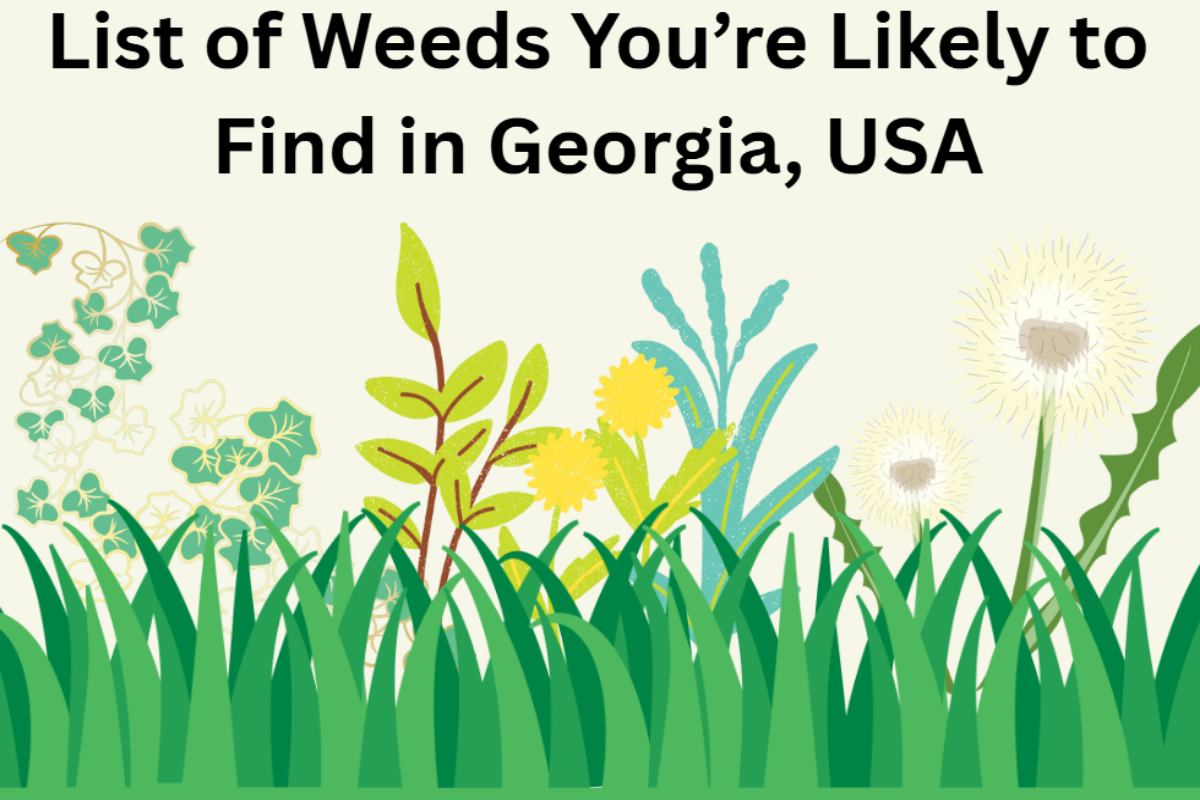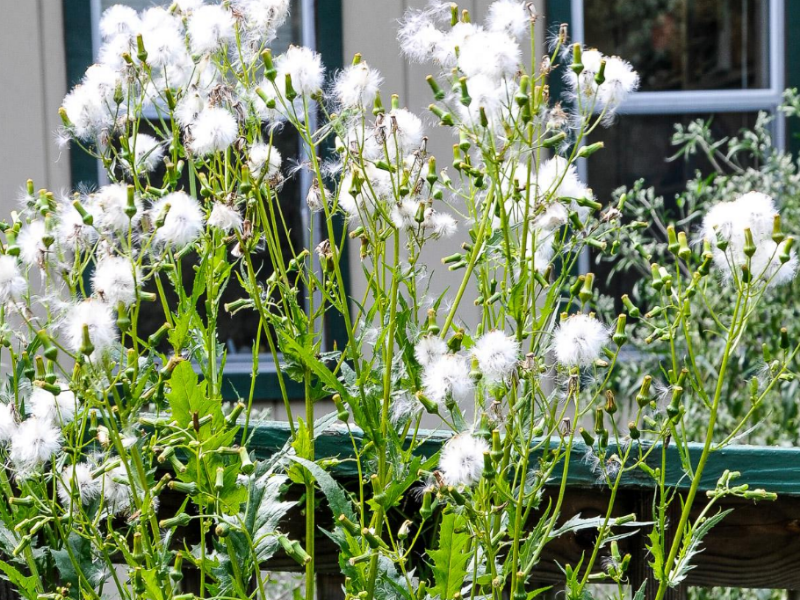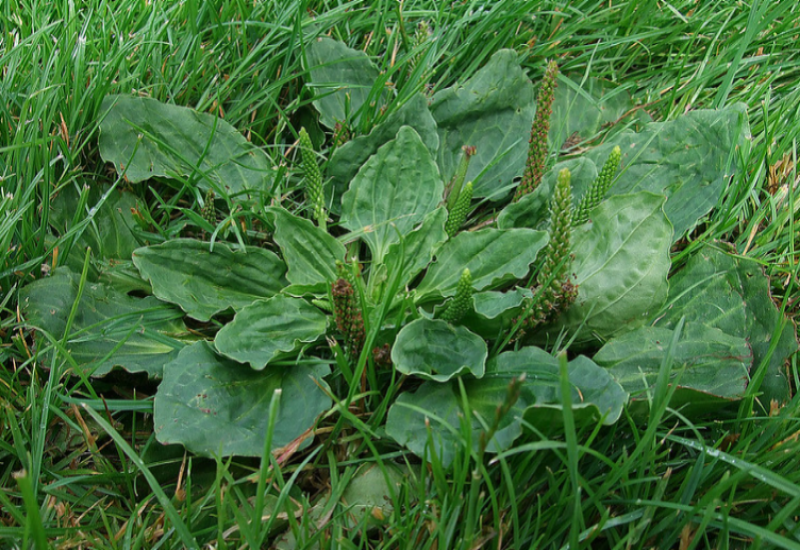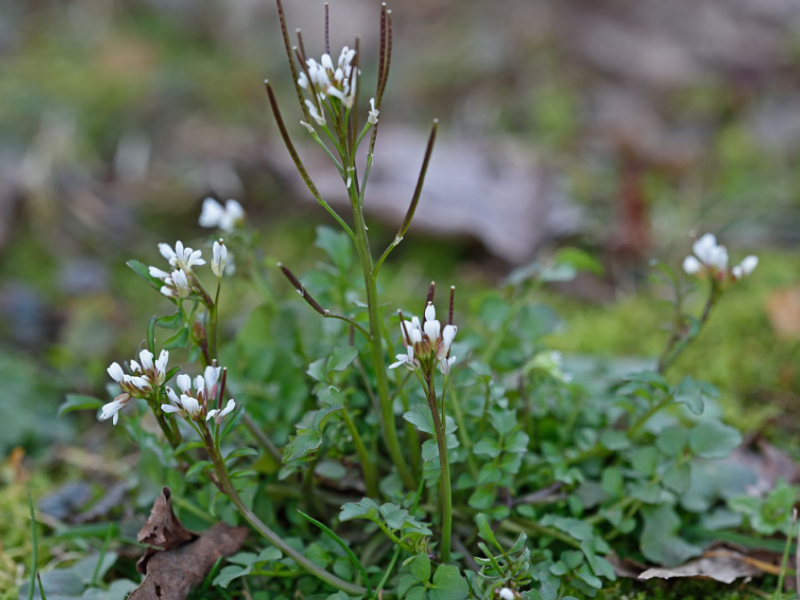Located in the southeastern region of the United States, Georgia boasts a diverse geography comprising mountains, beaches, and farmlands.

It shares borders with states like Florida, North Carolina, and South Carolina, placing it in a subtropical zone known for its plant diversity.
The Peach State also experiences hot and humid summers, along with mild winters.
These climatic conditions, coupled with the ample rainfall and fertile soils, make Georgia a haven for many types of weeds. They typically occur in lawns, cropping systems, open fields, roadsides, meadows, and gardens.
With such persistent and invasive flora, this post aims to help homeowners, farmers, and landscapers identify common culprits. We’ll also provide expert-recommended ways to exterminate them for good.
1. Chamberbitter (Phyllanthus urinaria)

- Local Name: Gripeweed, Niruri, or Leafflower
- Family: Euphorbiaceae
- Annual or Perennial: Annual
Chamberbitter is native to Asia but has been introduced in the tropics, including Georgia and other southeastern states in the U.S. It can be identified by its grooved stems, thin, oblong leaves arranged in two rows along the stem, seed pods on the leaf undersides, and small, five-petaled green flowers.
The weed is a prolific seed producer and can adapt to challenging environmental conditions, making it a challenging weed in lawns, gardens, and other disturbed sites.
A 2-4 inch layer of mulch can prevent the spread of the weed in ornamental areas as the seeds highly depend on sunlight to germinate. Hand-pulling when the plants are in the seedling stage is also a viable option.
Preemergence herbicides such as atrazine and isoxaben are effective when applied at the right time in various turf grasses. Postemergence herbicides indicated for Chamberbitter control in various settings include atrazine, glyphosate, and a combination of dicamba, MCPP, and 2,4-D.
2. Annual Bluegrass (Poa annua)

- Local Name: Annual Bluegrass
- Family: Poaceae
- Annual or Perennial: Annual
Poa annua is a likely weed you’ll find on lawns across Georgia. The problematic weed germinates in the fall, overwinters, and bolts up again in spring. Key distinguishing features include flat leaves with boat-shaped tips and pyramid-shaped panicles with airy white and green spikelets.
It forms tufted clumps that create uneven patches on lawns, causing thinning of the turf and aesthetic issues over time. While it may be competitive with other weeds, it can particularly make lawns vulnerable to other summer annual weeds like Large Crabgrass.
Raising mowing height, withholding irrigation, and reducing nitrogen fertilization during peak annual bluegrass growth season can reduce spread and establishment on lawns.
Common herbicides for Annual Bluegrass control in diverse turfgrasses include pendimethalin, atrazine, oryzalin. However, the grass weed resistance to these common herbicides has been reported in Georgia.
Read more about various herbicides and their turfgrass application, or consult your local extension office for the best chemical strategy for your landscape.
3. Ground Ivy (Glechoma hederacea)

- Local Name: Creeping Charlie
- Family: Lamiaceae
- Annual or Perennial: Perennial
Ground Ivy is a common low-growing lawn weed in Georgia. It produces prominently veined, round to kidney-shaped leaves, hairy, square stems, and small blue-purplish flowers.
Its ability to reproduce by seeds and stems, thrive in diverse conditions, and grow rapidly makes it an invasive weed to monitor.
Maintaining a healthy lawn and covering shaded turf areas with a perennial groundcover can discourage growth. Hand-pulling can be effective if the stolons with nodes are removed and disposed of correctly.
Repeat applications of herbicides like triclopyr, fluroxypyr, or combinations of both can control existing infestations.
4. American Burnweed (Erechtites hieraciifolius)

- Local Name: American Burnweed or Fireweed
- Family: Asteraceae
- Annual or Perennial: Annual
American Burnweed is a fast-growing annual weed, native to Georgia and other southeastern states. You can identify it by erect, hairy or smooth stems (8-10 feet high), large basal leaves, serrated upper leaves, and white flowers in elongated heads.
While it has numerous medicinal benefits and can improve air quality by assimilating nitrogen dioxide, it can also invade gardens, meadows, fields, roadsides, and ditches, causing economic losses and reduced aesthetic appeal.
Since it develops shallow roots, remove the weeds by hand. Cultivation and hoeing are also viable options for small infestations. Apply broadleaf herbicides like 2,4-D and triclopyr, or systemic products like glufosinate or glyphosate for larger infestations.
5. Dandelion (Taraxacum officinale)

- Local Name: Dandelion
- Family: Asteraceae
- Annual or Perennial: Perennial
You’re likely to come across the bright yellow dandelions in lawns and gardens throughout Georgia. Dandelions develop deep taproots that extract important resources, leading to thinning and weakening of turf grasses.
Pull the weeds by hand and ensure to remove the entire taproot system. For tougher taproots, hand-digging tools can make the work easier. However, these strategies may require repeated treatments over a long period of time.
Maintaining a healthy lawn through proper management practices is an effective, proactive measure in keeping dandelions away.
Pre and postemergent herbicides such as dithiopyr, isoxaben, dicamba, glyphosate, MCPP, triclopyr, carfentrazone, and iron HEDTA, respectively, are indicated for fast and effective removal.
6. Broadleaf Plantain (Plantago major)

- Local Name: Broadleaf Plantain or Common Plantain
- Family: Plantaginaceae
- Annual or Perennial: Perennial
Broadleaf Plantain is a perennial weed mostly found in lawns, gardens, roadsides, pastures, and ornamental plantings throughout the state.
The weed forms deep roots and dense clumps with its basal rosette leaves, reducing the usability and aesthetic appeal of landscaping and gardens.
Repeated hand-pulling and digging are viable options for broadleaf plantain removal in gardens and lawns.
Additional measures include applying preemergent herbicides like atrazine, mesotrione, and isoxaben or postemergent herbicides such as dicamba, sulfentrazone, bromoxynil, and 2,4-D.
7. Annual Ragweed (Ambrosia artemisiifolia)

- Local Name: Common Ragweed
- Family: Asteraceae
- Annual or Perennial: Annual
Annual Ragweed is a native summer annual that grows about 2 feet tall. It produces much-branched stems, hairy, pinnately divided leaves, and separate, yellow-green, male and female flowers on long terminal racemes.
The weed reproduces by seed, is poor soil and drought tolerant, allowing it to spread in areas such as roadsides, pastures, fields, meadows, orchards, and other waste areas.
Apart from its weedy and invasive nature, Ragweed’s male flowers are known for producing pollen that can cause severe allergies, contact dermatitis, and hay fever.
Hand pulling and hoeing are viable strategies for getting rid of infestations if discovered early before they develop tough taproots.
Annual Ragweed has developed resistance to common chemical weed killers, so take every preventive measure, including continuous monitoring, and repeated pulling of the seedlings to prevent establishment.
8. Bittercress (Cardamine hirsuta)

- Local Name: Hairy Bittercress
- Family: Cruciferae
- Annual or Perennial: Annual
Bittercress is native to Europe and Asia but has also been naturalized in North American states, including Georgia.
The winter annual can be identified by its hairy stems, flat, dark-green rosette leaves, and dense clusters of four-petaled, white flowers at the end of the stems.
The opportunistic weed spreads by seeds and can be found in thinned lawns, poorly mulched gardens, pavers, and parks.
Control the weeds by hand-pulling, mowing, or laying mulch. Maintaining a healthy lawn will also discourage growth.
Preemergence herbicides such as dithiopyr, isoxaben, and dimethenamid or postemergence products containing 2,4-D, dicamba, fluroxypyr, clopyralid, and triclopyr combinations can provide effective control against Hairy Bittercress.
9. Large Crabgrass (Digitaria sanguinalis)

- Local Name: Large Crabgrass or Hairy Crabgrass
- Family: Poaceae
- Annual or Perennial: Annual
Large Crabgrass is a weedy summer annual that spreads rapidly by branching stems, invading agricultural fields, lawns, sidewalks, and driveways.
While it may be a desirable forage to furnish summer grazing in parts of Georgia, for landscapers, it is a pesky weed that can become a serious problem in desirable turfs and gardens.
Remove the young plants by hand or using efficient digging tools before their roots take hold of the soil. Mulching can slow germination in gardens and other ornamental areas.
You can also apply a crabgrass preventer herbicide or other common herbicides like oryzalin, dithiopyr, and pendimethalin in early spring. For existing populations, consider post-emergent herbicides like quinclorac and fenoxaprop.
10. Wild Onion (Allium canadense)

- Local Name: Wild Onion
- Family: Amaryllidaceae
- Annual or Perennial: Perennial
In your tan turf, you may have noticed small, green shrub-like plants that you can almost swear look like onions, and you’re right. The weed you see is called Wild Onion.
It is a perennial cool-season weed that grows 10-15 inches tall. When leaves are crushed or mowed, they produce an oniony aroma, hence the name.
Wild Onion reproduces by seeds, aerial bulbils, and underground bulblets, sticking out like a sore thumb in the otherwise dormant turfgrass. It also invades meadows, roadsides, farm fields, and disturbed areas.
Hand-pulling or digging the bulbs is an effective strategy to remove the weed. However, since the turf is dormant, the empty spots left could lead to the growth of early spring weed bolters.
Regularly mowing the leaves will cut off photosynthetic activity, discouraging the growth of new bulbs. Consider selective herbicides such as dicamba, 2,4-D, or MCPP to kill the weed without harming your turfgrass.

Lead Editor for Insight Weeds.